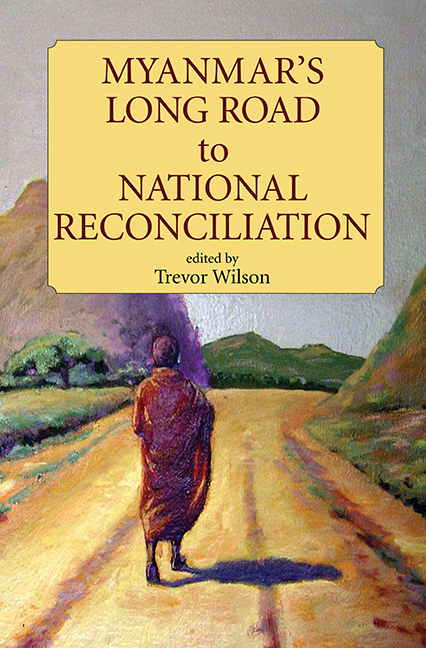Book contents
- Frontmatter
- Contents
- Acknowledgements
- The Contributors
- Glossary
- Overview
- I Perspectives on Recent Political Developments
- II Perspectives on the Economy and on Agricultural Development
- III Perspectives on National Reconciliation and Civil Society Development
- 8 Civil Society and Legitimacy: The Basis for National Reconciliation in Burma/Myanmar
- 9 Making a Responsible Corporate Contribution to Modern Diplomacy in Myanmar
- 10 Creating an Environment for Participation: International NGOs and the Growth of Civil Society in Burma/Myanmar
- 11 More Than Saving Lives: The Role of International Development Agencies in Supporting Change Processes in Burma/Myanmar
- 12 Exit, Voice and Loyalty in Burma: The Role of Overseas Burmese in Democratising Their Homeland
- IV Charting the Way Ahead
- Index
12 - Exit, Voice and Loyalty in Burma: The Role of Overseas Burmese in Democratising Their Homeland
from III - Perspectives on National Reconciliation and Civil Society Development
Published online by Cambridge University Press: 21 October 2015
- Frontmatter
- Contents
- Acknowledgements
- The Contributors
- Glossary
- Overview
- I Perspectives on Recent Political Developments
- II Perspectives on the Economy and on Agricultural Development
- III Perspectives on National Reconciliation and Civil Society Development
- 8 Civil Society and Legitimacy: The Basis for National Reconciliation in Burma/Myanmar
- 9 Making a Responsible Corporate Contribution to Modern Diplomacy in Myanmar
- 10 Creating an Environment for Participation: International NGOs and the Growth of Civil Society in Burma/Myanmar
- 11 More Than Saving Lives: The Role of International Development Agencies in Supporting Change Processes in Burma/Myanmar
- 12 Exit, Voice and Loyalty in Burma: The Role of Overseas Burmese in Democratising Their Homeland
- IV Charting the Way Ahead
- Index
Summary
During the prolonged rule of successive military regimes in Burma for the last fifty years, waves of people have left the country in protest against unjust authority. The largest wave of such exodus happened in 1988, when several thousand young Burmese students fled to the Thai-Burma border following a violent crackdown on popular uprisings they had peacefully organized. For good reason, the students dreamed of fighting back against the regime from the border areas, where resources and sanctuary for such a project were readily available. The existence in the neighbouring countries of exile groups who had left Burma in earlier struggles influenced the large exodus and attracted more to leave. The majority ended up staying in the Burmese border areas and took up arms to wage a guerrilla war against the State Law and Order Restoration Council (SLORC). The SLORC, the name the military regime assumed when it took power in 1988, quickly became synonymous with brutal campaigns waged by the regime against the pro-democracy movement. Repression against the students (who at that time arguably represented the voice of the people) in the form of arrests, torture, and long closures of the universities, was harsh and continuous. The chance of persecution exceeded by far the available civic space for organizing resistance inside the country. As a result, in the years following 1988 many more students joined the flight.
The students who arrived at the Thai-Burma border at the end of 1988 were highly loyal to the mission which they presumed they would accomplish in a relatively short time. However, their adventurous engagement in armed resistance under the banner of the All Burma Student Democratic Front collapsed within a few years in the face of the sheer military capability of the SLORC. Many students gave up being guerrillas and searched for an alternative means to change the authoritarian regime in Burma. Some settled in the United States, Canada, Australia, or Europe, and were able to continue their education there.
- Type
- Chapter
- Information
- Myanmar's Long Road to National Reconciliation , pp. 231 - 260Publisher: ISEAS–Yusof Ishak InstitutePrint publication year: 2006



